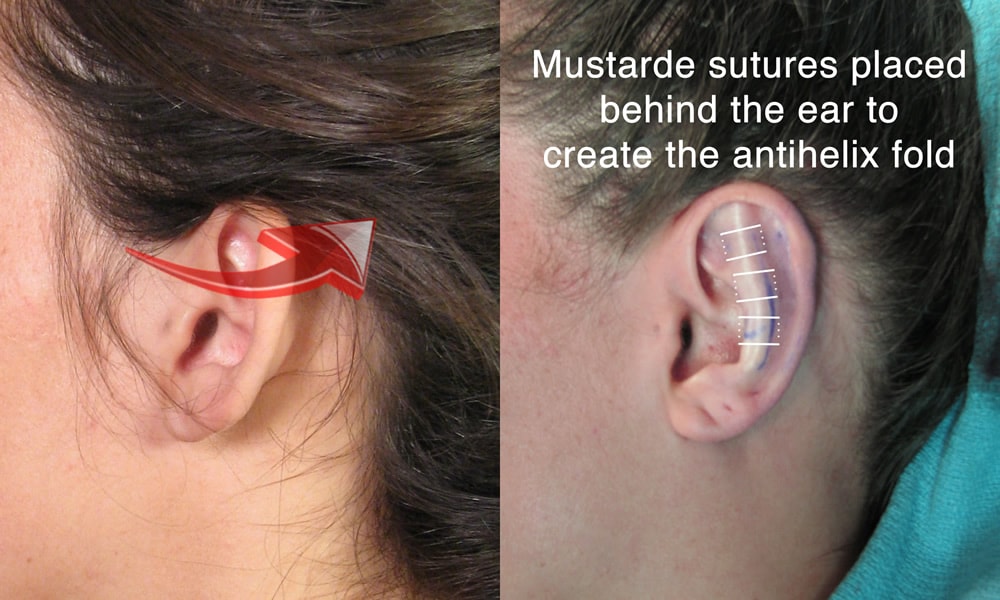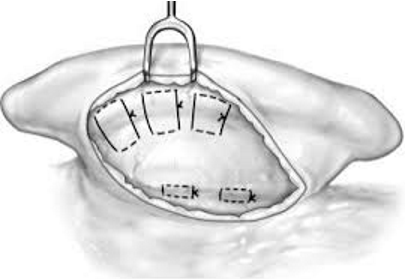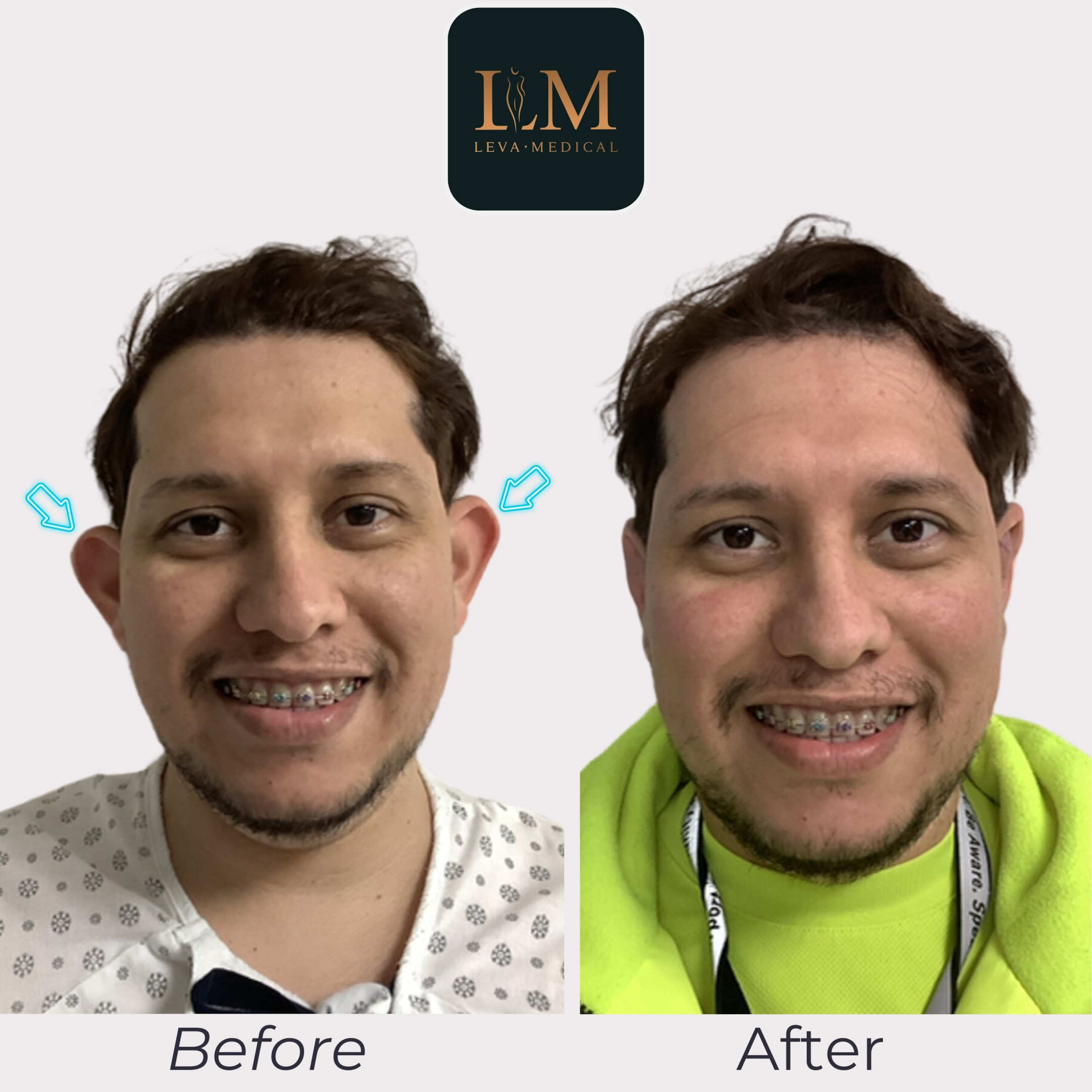Otoplasty Ear Pinning: Surgery, Benefits, and Risks Explained
Otoplasty ear pinning is a surgical procedure designed to reposition prominent ears closer to the head. This article covers what the surgery involves, its benefits, potential risks, and what makes a good candidate.
Key Takeaways
-
Otoplasty, specifically ear pinning, is a surgical procedure that corrects protruding ears to enhance facial balance and self-esteem.
-
The surgery typically lasts one to two hours and involves discreet incisions, reshaping of the ear cartilage, and careful post-operative care to ensure optimal recovery.
-
While ear pinning offers significant aesthetic benefits, potential risks such as infection, bleeding, and allergic reactions must be considered, making thorough consultation with a surgeon essential.
Understanding Otoplasty and Ear Pinning

Otoplasty is a type of ear surgery aimed at changing the position of the ears, typically to improve facial proportion and aesthetic balance. This procedure is often sought by individuals who are self-conscious about their prominent ears, which can sometimes attract unwanted attention. The primary goal of otoplasty is to bring the ears closer to the head, thereby reducing their prominence and creating a natural-looking fold.
Ear pinning surgery is a specific technique within otoplasty that involves repositioning one or both ears closer to the head to achieve a more balanced look. This surgical correction can significantly enhance a person’s appearance without altering the size of the ears. Techniques used in this surgery often involve making incisions behind the ear to reshape the ear cartilage, ensuring minimal visible scarring.
People choose to undergo otoplasty for various reasons, including being bothered by ear protrusion, injuries, or birth defects. Whether the issue is congenital or developed over time, ear pinning can provide a lasting solution that boosts self-confidence and improves overall facial symmetry.
The Otoplasty Procedure

The otoplasty procedure is a meticulously planned surgery performed by skilled plastic surgeons. Typically, the procedure takes about one to two hours to complete. Depending on the patient’s needs and the complexity of the surgery, it can be performed under local anesthesia, ensuring that the patient remains comfortable throughout the process.
The surgeon begins the process by making discreet incisions behind the ears to minimize visible scarring. These incisions provide access to the ear cartilage, which is then reshaped and repositioned to achieve the desired appearance. Sutures, often mustarde sutures, are used to hold the new ear structure in place. This careful manipulation ensures that the ears are positioned closer to the head, correcting the protruding ears and enhancing facial symmetry.
Once the surgery is complete, the ears are carefully sutured, and the incisions are closed with precision to promote healing and reduce the risk of scarring. This results in a more natural and harmonious ear shape that blends seamlessly with the patient’s facial features. The procedure aims to create a balanced and aesthetically pleasing appearance.
Post-Surgery Care and Recovery Process
Post-surgery care is crucial to ensure a smooth recovery and optimal results from the otoplasty procedure, which may be part of reconstructive surgery.
After the surgery, patients are advised to:
-
Keep their ears covered with bandages to protect the incisions and reduce swelling.
-
Ensure that these bandages remain in place as instructed by the surgeon.
-
Avoid rubbing or disturbing the surgical site to prevent complications.
Specific care instructions include avoiding sleeping on the side to prevent pressure on the ears and wearing loose collars to minimize irritation. Patients are also advised to manage discomfort with prescribed medications and to follow a gentle cleaning routine around the incisions. It’s important to avoid strenuous activities, including contact sports, for at least a few weeks post-surgery to ensure proper healing.
Follow-up appointments are an essential part of the recovery process, allowing the surgeon to monitor the healing progress and address any concerns that may arise. These appointments help ensure that the ears are healing properly and that the results of the otoplasty are as expected. Adhering to post-surgery care guidelines helps patients achieve the best possible outcome from their ear surgery.
Benefits of Ear Pinning Surgery

Ear pinning surgery offers numerous benefits that can significantly enhance a patient’s quality of life. One of the most notable advantages is the boost in self-esteem that many patients experience following the procedure. Correcting prominent ears and achieving a more balanced appearance often boosts individuals’ confidence and comfort in social situations.
Otoplasty can be particularly beneficial for children, preventing potential teasing and social trauma associated with prominent ears. Parents often consider this surgery to help their children avoid the emotional distress that can come from being singled out due to their appearance. By addressing the issue early, children can grow up with a more positive self-image and fewer psychological burdens.
Overall, the benefits of ear pinning surgery extend beyond aesthetic improvements. The procedure can provide a lasting solution that enhances facial harmony and boosts self-confidence, making it a worthwhile consideration for those with protruding ears.
Potential Risks and Complications
As with any surgical procedure, otoplasty carries potential risks and complications that patients should be aware of. One of the common risks is infection at the surgical site, which can occur if proper care is not taken during the recovery process. Minimizing this risk involves closely following the surgeon’s instructions regarding wound care and hygiene.
Bleeding or blood clots are other potential complications that can arise during or after the surgery. While these occurrences are typically mild and manageable, they can still pose a risk to the patient’s health and require careful monitoring. Additionally, some patients may experience allergic reactions to materials used during the procedure, which underscores the importance of discussing any known allergies with the surgeon beforehand.
Less common complications include changes in skin appearance, such as discoloration or bumpiness around the surgical site. While these changes are usually temporary, they can be distressing for patients. Understanding these risks and being prepared for potential complications is crucial for anyone considering otoplasty.
Who is a Good Candidate for Otoplasty?
Otoplasty is suitable for both children and adults who have prominent ears. Children as young as four years old can undergo ear pinning surgery, provided their ears are fully developed. Typically, ear cartilage stabilizes enough for surgery around the ages of 4 to 6, making this an ideal time for the procedure.
Adults can undergo otoplasty at any age. The only requirement is that their ears must be fully developed. Protruding ears, which may have been a source of self-consciousness or discomfort for many years, can be corrected by the procedure. Whether the issue is congenital or developed later in life, otoplasty offers a solution that can significantly improve one’s appearance and self-confidence.
In summary, anyone with fully developed ears and concerns about their appearance, including those related to a normal ear, can benefit from otoplasty. Consulting with a qualified plastic surgeon can help determine if this plastic surgery procedure is the right choice based on individual needs and medical history.
Long-Term Results and Follow-Up
The long-term results of otoplasty are generally considered to be permanent, thanks to advanced surgical techniques. Patients can expect lasting changes that significantly improve the position and appearance of their ears. This permanence is one of the key benefits of the procedure, providing a lifelong solution to the issue of prominent ears.
Follow-up appointments are essential to monitor the healing process and ensure the best possible outcome. These appointments allow the surgeon to address any concerns and make any necessary adjustments during the recovery period. Regular follow-ups help in maintaining the desired results and addressing any complications early on.
In some cases, if the initial results of the otoplasty are unsatisfactory, revision surgery may be an option. While this is relatively rare, it provides an opportunity for further refinement and improvement if needed. Overall, patients can expect a significant and lasting improvement in their ear appearance following otoplasty.
Summary
In conclusion, otoplasty and ear pinning surgery offer a viable solution for individuals with prominent ears. The procedures are designed to enhance facial harmony, boost self-esteem, and provide long-lasting results. By understanding the surgical process, post-surgery care, and potential risks, individuals can make informed decisions about undergoing ear surgery.
Whether for children or adults, otoplasty can significantly improve one’s quality of life by addressing concerns related to ear appearance. If you or a loved one is considering this procedure, consulting with a qualified plastic surgeon can provide further guidance and ensure the best possible outcome.
Frequently Asked Questions
What is otoplasty?
Otoplasty is a surgical procedure that adjusts the position of the ears to enhance facial proportion and aesthetic balance. This corrective surgery can significantly improve an individual's overall appearance.
Who is a good candidate for otoplasty?
A good candidate for otoplasty are adults who have prominent ears.
What are the potential risks of ear pinning surgery?
The potential risks of ear pinning surgery include infection, bleeding, blood clots, recurrence, and alterations in skin appearance. It is essential to discuss these risks with your surgeon beforehand.
How long does the otoplasty procedure take?
The otoplasty procedure generally takes between one to two hours to complete. This duration allows for the necessary adjustments to the ears for optimal results.
What is the recovery process like after otoplasty?
The recovery process after otoplasty typically requires keeping the ears covered with bandages, avoiding strenuous activities, and attending follow-up appointments to ensure proper healing. Adhering to these guidelines will facilitate a smoother recovery.




